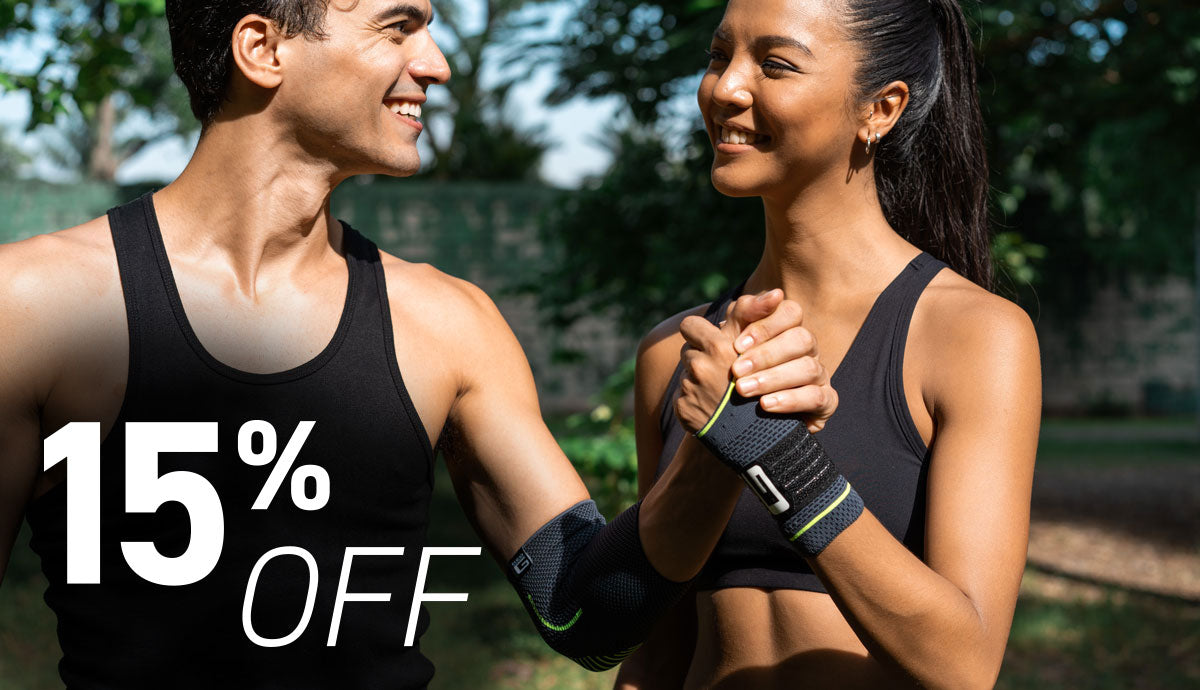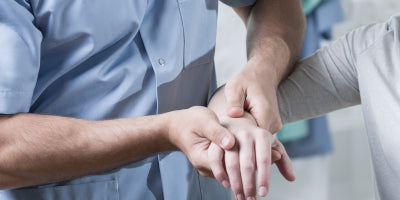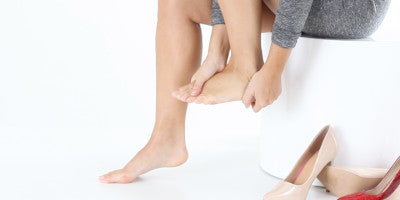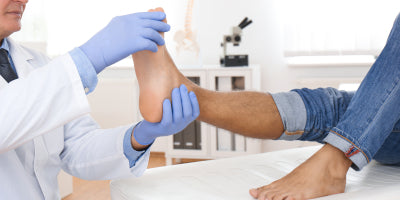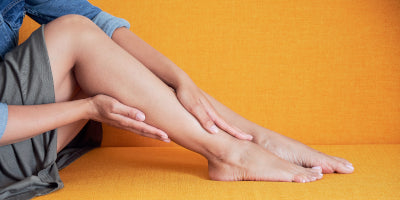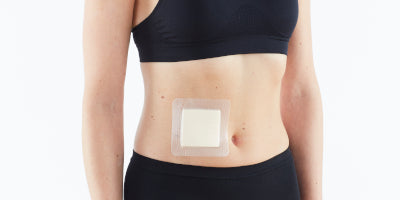Understanding and Managing Arthritis

What is arthritis?
It is estimated that around 10 million people in the UK are living with a form of arthritis – a common condition which shows itself in varying degrees of pain, swelling and stiffness in the joints. Arthiris can affect anyone, but it is most common in people over the age of 45. The two varieties of arthritis that a large proportion of the population will have either heard about or know of someone who has suffered with are Osteoarthritis (OA) and Rheumatoid Arthritis (RA)
What is Osteoarthritis?

Osteoarthritis is the most common form of arthritis estimated to effect nearly 9 million people in the UK with women over 45 being the most common sufferers. Osteoarthritis can affect any joint in the body, but the most common ones people will suffer with will be knees and feet due to the load bearing on this joints, followed by the hands due to the repetitive use of this joint when typing or writing.
OA is often wrongly labelled as being ‘Wear and Tear’ and although it’s not clear what causes OA there are a number of factors that greatly increase the chances of developing OA
- Obesity- for the main weight bearing joints of the body such as the knees, being overweight puts extra strain on these joints
- Age- as we age we become more likely to develop arthritis. This may be down to the body not being able to repair itself as well as before or increased weakness in the muscles and joints
- Previous injury- major injuries such as fractures and dislocations can lead to arthritis later down the line
Symptoms

The main symptom of OA is pain and this is closely followed by stiffness in the joint. Pain tends to be worse when the joint is moving or at the end of the day when resting. Stiffness in the joint may be felt when first moving after a period of rest but will usually ease quickly after you have got moving.
Along with the stiffness, the joint may not move as freely as it previously could and there could also be a feeling or audible sound that the joint is grating/cracking. Upon examination by a medical professional, some joints such as the knee may have a hard end feel to the usual range of motion in the joint which in a healthy joint would usually be a springy sensation.
Managing Osteoarthritis

As there is no cure for osteoarthritis all treatments are revolved around providing pain relief and allowing you to continue with everyday tasks as much as possible. This includes:
Exercise- as you may have pain on movement or limited mobility, it can be easy to stop moving but this can actually cause more stiffness in the joint. If you haven’t exercised for a while speaking to a medical professional such as a physiotherapist will be ideal to give you some starting exercises and what to be focusing on which could be targeted to range of movement, strengthening of the muscles or just overall aerobic fitness. It may also be advised for you to take part in hydrotherapy sessions where you do exercises in water to put less strain on the joints.
Pain management medication- if pain is a particular issue and this is limiting the ability to exercise, then this will be discussed first. You may be recommended a non-steroidal anti-inflammatory drug or paracetamol to manage the pain and allow you to do a lot more activity. Other pain management treatment could include using a TENS machine which sends alternate pain signals to the brain to distract from the usual pain signal caused by the joint.
Hot and cold therapy- applying a heat pad to the affected joint/area for short periods of time can help to ease pain likewise applying ice packs will help with any swelling or discomfort for the joint. As these can differ depending on the size, type and brand of the pack it is always advised to read any application instructions fully before applying.
Splints and Supports- there are various splints and supports on the market which can help to realign the joints or just provide suitable support and warmth to the joints to allow improved movement. Some hand supports will also include grippers or things that will help with everyday tasks, such as opening jars and general carrying tasks.
What is Rheumatoid Arthritis (RA)?

Similar to OA, Rheumatoid Arthritis is a condition that causes pain, swelling and stiffness in the joints however it is an auto-immune condition. The immune system gets confused thinking there is an issue in the body and attacks healthy tissues which in the case of RA is through inflammation in the joint which, when this inflammation goes down the joint capsule remains in a stretched position leading to an unstable joint. RA is usually felt in the extremities of the body first and usually both sides of the body will be affected at the same time.
RA is estimated to affect around 400,000 adults in the UK aged 16 or over. However, unlike OA this condition can get worse very quickly so getting an early diagnosis and treatment is key.
The below can play a part in why someone may develop RA:
Age- most people are diagnosed between 40 and 60
Genetics- although unclear what the genetic link is if you have a relative who has the condition you are also more likely to develop this.
Smoking- smoking significantly increases the risk of developing rheumatoid arthritis
Symptoms

Joint pain and stiffness first thing in the morning are two main symptoms of RA, but also joint swelling that can be warm to touch or appear red is also a main symptom. Other symptoms that can occur are fatigue, weight loss, sweating and depending where the inflammation is, you may also get dry eyes and chest pains.
Treatment and managing symptoms

The three main treatments for Rheumatoid Arthritis are through drugs, physical therapies, or surgery and these will be discussed with your medical practitioners who ae looking after your care to find the best treatment options for you. Managing your symptoms especially when your symptoms get worse (flare up) is key to improving you’re the impact on everyday life.
Some common tips are:
Hot or cold therapy- Some individuals find that using a warm pack can help with the joint pain where as others find cold to be of more benefit. We would advise experimenting to see which is best for your individual needs as in some cases the heat or cold can make symptoms feel worse.
Hydrotherapy- Exercises based in the water provide a safer setting to perform various movements with a lower impact on the joints. Hydrotherapy pools also tend to be slightly warmer than a normal swimming pool so the heat may also help with joint pain
Occupational Therapy- seeing an occupational therapist can help you to understand what is currently limiting your ability to do everyday tasks both at home or at work. They can then suggest aids and adaptations that may help you still perform these tasks.
Diet and Supplements- depending on your medication and environment, it may be advised that you take a form of vitamin d supplement. This may be more important if your mobility is reduced and you are unable to get outside often. Eating a balanced diet will help maintain a health weight but some people also find certain foods bring on the flare ups so understanding what works for you is crucial.

Muscle and Joint support- At Neo G we offer a variety of supports to help with various forms of arthritis as well as other medical conditions. Our Arthritis gloves have been developed to include two types of glove per product - the Warming gloves provide added heat retention to help keep stiff, aching and painful joints warm and mobile every day, whilst the slimline Lifestyle gloves featuring a silicone palm grip and open fingertips for dexterity and daily comfort help provide warmth, comfort and mild compression. It is recommended to combine both gloves for optimum symptom relief.
We hope this provides some guidance on how to manage arthritis-related pain or discomfort. If you have any concerns relating to OA or RA, seek advice from your GP.
Relevant related blog posts: Top tips to help manage Arthritis pain
